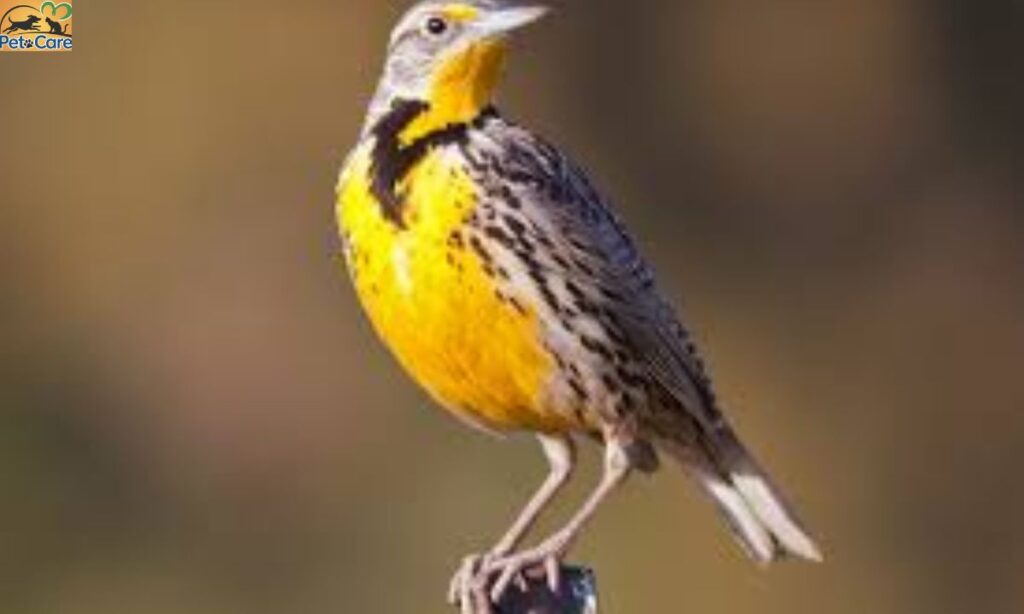Kansas, known for its vast plains and vibrant wildlife, has a state bird that is both beautiful and symbolic.
The Western Meadowlark Sturnella neglecta is not only the state bird of Kansas but also a beloved symbol of the state’s natural beauty.
How the Official State Bird of Kansas Was Chosen
The Western Meadowlark was officially designated as the state bird of Kansas in 1937. The choice of this bird reflects the state’s deep connection to the land, its wildlife, and the agricultural lifestyle that has shaped Kansas for centuries.
The Western Meadowlark was chosen because of its widespread presence across Kansas and its beautiful, melodious song that brings life to the plains. This bird’s vibrant yellow breast and distinctive black markings make it an easy bird to identify,
Tips to Identify the Official State Bird of Kansas
Identifying the Western Meadowlark can be straightforward if you know what to look for. Here are some key tips for spotting the bird:
- Coloration: The Western Meadowlark is known for its bright yellow belly and a distinctive black “V” shape on its chest. This pattern is one of its most recognizable features.
- Size: The bird is about 10 inches long, similar in size to a robin, with a slightly larger wingspan.
- Behavior: The Western Meadowlark often stands on fence posts, singing in open grasslands. Its song is a series of clear, flute-like notes that sound like a musical trill.
- Habitat: Look for the Western Meadowlark in grasslands, agricultural fields, and open prairies—these are its preferred environments. It is also frequently seen perched in rural areas.
- Flight Pattern: While they are not frequent fliers, they can be seen fluttering from one perch to another.
Nesting and Dietary Habits of Western Meadowlarks
Western Meadowlarks have unique nesting habits that are closely tied to their environment. Typically,
Tthey build their nests on the ground, often in tall grasses or agricultural fields. The nests are constructed with a mix of grasses, weeds, and other plant material.
Read This Blog; How to Help a Bird with a Broken Wing
Diet of the Western Meadowlark
The Western Meadowlark is an omnivore, which means it eats both plant and animal matter. Its diet primarily consists of:
- Insects: They feed on a wide range of insects, including grasshoppers, beetles, and caterpillars. Insectivores are particularly important for controlling pest populations.
- Seeds and Grains: During certain seasons, they will also consume seeds from various grasses and plants. Their feeding habits are adapted to life on the ground
Nesting Habits
- Location: The nests are typically located in tall grasses, where they can be hidden from predators.
- Materials: Nests are made of dry grass, weed stems, and leaves. They build a dome-shaped structure that provides warmth and protection to the eggs.
Western Meadowlark Eggs
The eggs of the Western Meadowlark are small, oval, and speckled with brown and black markings. They typically lay around 4 to 6 eggs per clutch, which are incubated by the female for about 12 to 15 days.
After hatching, the chicks are fed primarily insects and seeds. The eggs are a pale bluish color with brown speckles, helping them blend into the surrounding environment. This camouflage is an essential defense mechanism against predators.
The Breeding Habits of the Western Meadowlark

Breeding season for the Western Meadowlark generally starts in April and runs through July. During this time, male meadowlarks establish.
Territories and perform their characteristic songs to attract females. Their song is one of the most important aspects of their courtship behavior.
Mating and Territory
Males use their songs to defend their territory and to communicate with potential mates. They often sing from prominent perches, such as fence posts or tall grasses, to announce their presence. A male’s ability to produce a long, complex song is thought to be an indication of his fitness as a mate.
Once a female chooses a male, they will form a bond and begin building a nest together. The female is responsible for the majority of the nest construction, while the male helps protect the territory from other males.
Ostrich: A Fun Fact
While the Western Meadowlark is the state bird of Kansas, it’s interesting to note that the Ostrich is also a notable bird. Native to Africa, ostriches are known for being the largest living birds. However, they are not found in Kansas or any other part of North America in the wild.
Ostriches are often farmed for their meat, feathers, and eggs, and they are an interesting example of how diverse the bird world can be, even though they don’t share the same environment as the Western Meadowlark.
Read This Blog; How to Attract Birds to Bird Feeder
Top 10 Chicken Breeds Perfect for Cold Climates
If you are considering keeping poultry in cold climates like Kansas during winter, here are the top 10 chicken breeds that are well-suited for colder weather:
These chickens are hardy and have feathers that provide excellent insulation during the colder months. Some of these breeds, like the Rhode Island Red and Plymouth Rock, are also good egg layers during the winter season.
Discover the 8 Types of Hawks in Oklahoma
Hawks are common in both Kansas and neighboring Oklahoma. Here are the eight main species of hawks you can find in Oklahoma:
- Red-tailed Hawk
- Cooper’s Hawk
- Sharp-shinned Hawk
- Northern Goshawk
- Swainson’s Hawk
- Broad-winged Hawk
- Rough-legged Hawk
- Ferruginous Hawk
These hawks vary in size and hunting techniques but share a similar role in the ecosystem as predators.
How to Add Us to Google News

If you want to stay updated on wildlife and state bird-related topics, you can add us to Google News. Simply:
- Go to Google News.
- Search for our website or keyword.
- Click “Follow” to receive daily updates.
By following our news feed, you’ll get the latest articles, tips, and insights about Kansas and wildlife.
Frequently Asked Questions
What is the state bird of Kansas?
The Western Meadowlark is the official state bird of Kansas, chosen in 1937.
Why was the Western Meadowlark chosen as Kansas’ state bird?
The Western Meadowlark was chosen due to its widespread presence in Kansas and its beautiful, melodic song that reflects the spirit of the state’s open landscapes.
What does the Western Meadowlark eat?
The Western Meadowlark eats insects, such as grasshoppers and beetles, and seeds from grasses and plants.
How long does it take for Western Meadowlark eggs to hatch?
Western Meadowlark eggs take about 12 to 15 days to hatch after being incubated by the female.
Conclusion
The Western Meadowlark is more than just Kansas’ state bird—it is a living symbol of the state’s natural beauty, agricultural heritage, and wildlife. Its distinctive song and bright yellow feathers have made it a favorite among birdwatchers and residents alike.
Whether perched on a fence post or soaring through the open skies, the Western Meadowlark represents the untamed spirit of Kansas and continues to captivate all who encounter it.


